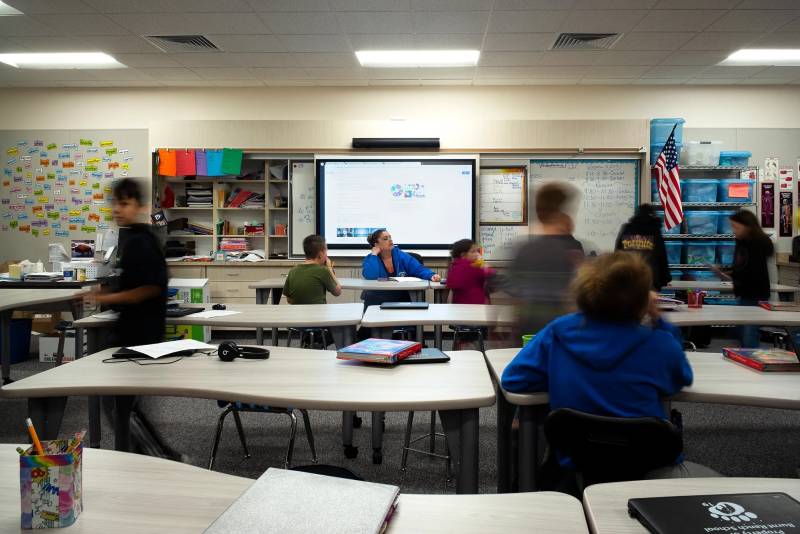Everyone agrees on the need for money to fix dry rot and build new science labs. However, some superintendents, as well as the civil rights law firm Public Advocates, had been pushing for a more equitable way to distribute the money. Currently, the state doles out facilities funding through 50–50 matching grants, so districts that can raise a lot of money locally — typically, higher-income areas — can get more state money.
Public Advocates has threatened to sue California if it doesn’t adopt a wider sliding scale for distributing the money. The current deal does include a sliding scale, but it’s only from 60% to 65%, not the 5% to 90% that Public Advocates wanted. Under the deal’s scale, the state’s wealthiest districts would only get slightly less than its poorest.
Also, under the current proposal, schools could get more money if they hire union contractors for their construction projects. That would give an edge to urban areas, where union labor is easier to find.
Brooke Patton, spokeswoman for the State Building and Trades Council of California, said hiring union workers would benefit any school project because the workers are highly trained and efficient. Union projects also include apprentices, who may be from the local community.
“Not only does California end up with new school facilities, but also a new generation of workers who can afford to live in California and contribute to our economy for years to come — a worthy investment of public funds,” Patton said.
The bill still needs to pass both houses with a two-thirds majority and be signed by the governor this week. To go into effect, it needs approval from a simple majority of voters in the fall.
‘It’s a compromise’
While the bill doesn’t satisfy every need for California’s schools, some education advocates said this week that it’s better than nothing.
“It’s not perfect; it’s a compromise,” said Derick Lennox, senior director at California County Superintendents, representing school administrators and supporting the bill. “(The bond) takes incremental, important steps toward equity that will do a lot of good.”
The bill includes some help for smaller and low-income districts, such as providing extra money to hire project managers and expanding the number of districts that qualify for hardship funds. It also sets aside 10% of the money for small districts.
The California School Boards Association also supports the bill, along with a companion bill, AB 2831, sponsored by Assemblymember Josh Hoover, a Republican from Folsom, that would provide more relief for small and low-income districts if the school bond passes in November.
“We’re more than sympathetic to the needs of small districts,” association spokesperson Troy Flint said. “But times are tight, and we feel it’s crucial to get a school bond on the ballot. … It’s not what we need, but it’s what we could get. Now we have to focus on getting it passed for the health and safety of California students.”
Old heaters, outdated kitchens, no AC
Trinity County Superintendent Fabio Robles said that some of the schools in his county are so dilapidated that any money is welcome. Passing local bonds is almost impossible, he said, because the county is so poor. So, schools are almost totally reliant on the state for repairs.
